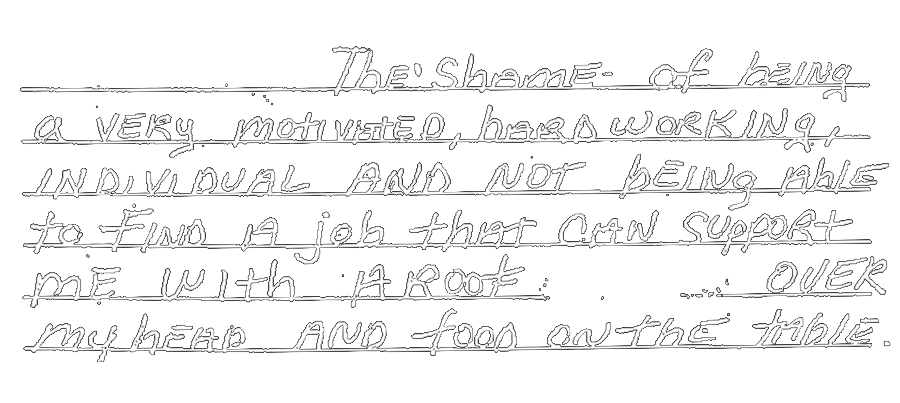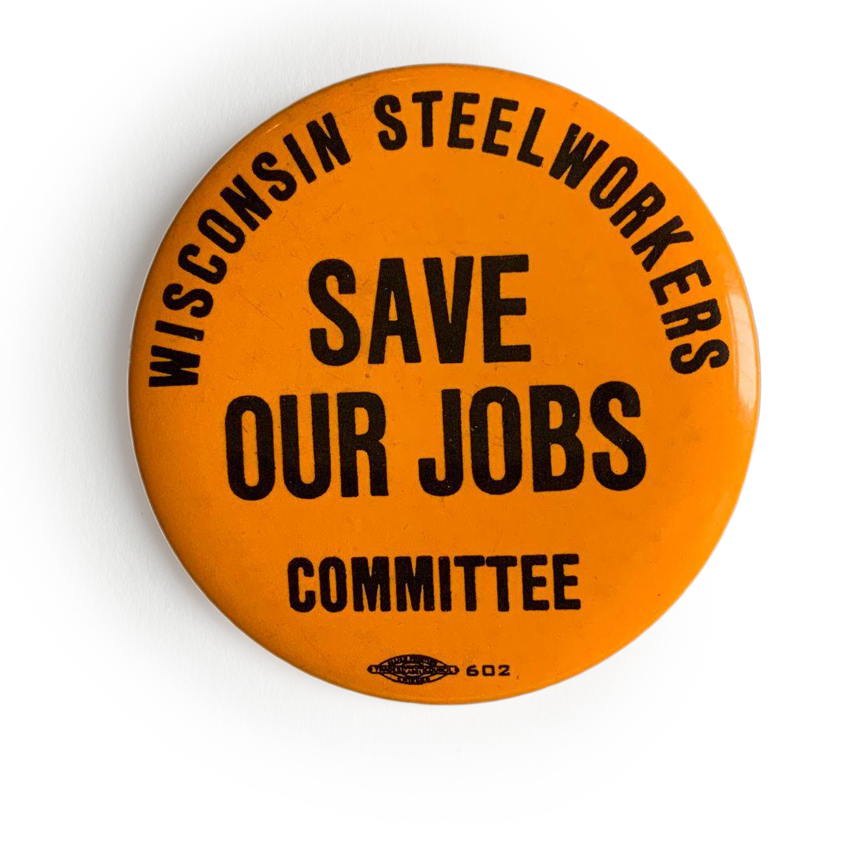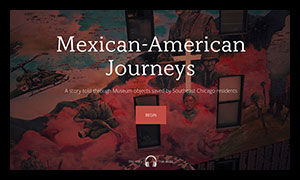iPad/Tablet Users: Please rotate your device horizontally to experience the story.
Phone Users: This story is not designed for phone screens, and is best viewed on a larger screen/device.
Thank you!
BACK TO HOME
Click "View Item in Archive" to open it in a new browser window
and progress bar
Click pullouts to read more indepth information
The Closing of the Mills
An interactive documentary told through Museum objects saved by Southeast Chicago residents
BEGIN
Peak Employment
at larger steel mills from after WWII to present
(hover over the mill names and areas)



















Beginning in the 1980s, the steel mills began to close. over 100,000 jobs were lost since the height of the industry.



















“Last Days of US Steel South Works”
Joe Jenczmionka and Hector Martinez
VHS home video, 1992
“Last Days of US Steel South Works”
Joe Jenczmionka and Hector Martinez
VHS home video, 1992
“They had rumors that it was going to close up, but none of us actually believed it.”
- Wes Bueno
Former Steelworker, US Steel-South Works
A Job Like No Other
Osborne Ferguson
Former Steelworker
Acme Steel
Race in the Mills
District 31 Women’s Caucus union leaders, 1978
Alice Peurala, President of Local 65 at South Works, in center
“I was taught to work and work hard. If it was two shovels for a man’s one, that’s what I did.”
- Rose Rodriguez
Inland Steel, East Chicago, Indiana
Women in the Mills
Gilbert Garcia
Former Steelworker, US Steel - South Works
A World Turned Upside Down
Job Loss by County*Source: US Dept. of Commerce and US Census Bureau
1 - 1,000
1,001 - 5,000
5,0001 - 10,000
10,000 - 539,357
Each mill in Southeast Chicago had a slightly different story.
(hover over the mill names)

 -->
-->

 -->
-->






View Notes from Unemployed Steelworkers

Vic Storino
Former Steelworker
“You know we look at the soup kitchens from the thirties, that was us in the 80s.”
- Rose Rodriguez
Inland Steel, East Chicago, Indiana
Frank Lumpkin
Former Steelworker - Wisconsin Steel
Save Our Jobs Committee Leader
March 1989

"Save our Jobs" Committee Button
(as seen on Frank's jacket)
Save Our Jobs Panel Discussion, 1988
Mike Yekich, James Stapay,
Joe Butler, Big Joe Jenczmionka
USX-South Works panel discussion
March 1992
Knowing the Past,
Facing the Future
View Another Message
PRODUCED BY: Chris Walley, Chris Boebel
CREATIVE DIRECTOR & UI/UX DESIGNER: Jeff Soyk
STORY NARRATIVE: Chris Boebel, Chris Walley, Jeff Soyk, Paige Mazurek
WRITER: Chris Walley w/ Chris Boebel
PROJECT MANAGERS: Chris Walley, Jeff Soyk
PROJECT CONSULTANT: Steve Walsh
RESEARCH: Chris Walley, Rod Sellers
PROJECT ARCHIVIST: Derek Potts
FRONT-END DEVELOPER: Jeff Soyk
VIDEO EDITING: Chris Boebel, Paige Mazurek
FOOTAGE FOR OPENING AND CLOSING VIDEOS: Chris Boebel, Steve Walsh, Lucid Creative Agency
ADDITIONAL FOOTAGE AND INTERVIEWS: Rod Sellers, Steve Walsh, Matt Goetz, Lucid Creative Agency
UI/UX DESIGN SUPPORT: Paige Mazurek
GRAPHICS: Jeff Soyk, Sasha Goldberg
SOUND DESIGN: Billy Wirasnik
ACKNOWLEDGEMENTS: Thanks to the Calumet region residents who donated artifacts relating to the steel mills and/or their closing or downsizing to the Southeast Chicago Historical Museum. Museum Director Rod Sellers (in conjunction with Metropolitan Family Services) conducted oral histories with former steelworkers during 2005-6. We are also grateful to steelworkers who were interviewed more recently at the Museum: Wes Bueno, Dorine Godinez, Rose Rodriguez, and Roger Gomez. Although Big Joe Jenczmionka has passed away, we received feedback on this story from former steelworkers Vic Storino (Republic), Bill Alexander (Acme), Dorine Godinez (Inland), and Bob Sarnowski (US Steel – South Works). Steve Walsh/Lucid Creative Agency and Chris Boebel shot the video of Wes Bueno at the Museum and South Works ore walls. Steve and Omni Media and Marketing conducted the interview with Roger Gomez. Christine Walley and Matt Goetz/Lucid Creative Agency conducted the interview with Dorine Godinez and Rose Rodriguez.
ADDITIONAL RESOURCES TO EXPLORE THIS TOPIC:
Documentary Films:
Boebel, Chris (dir) and Christine Walley
2017Exit Zero: An Industrial Family Story. (click to visit) 96 min. documentary film.
Walsh, Steve
2023Southeast: A City Within a City. (click to visit) Feature-length documentary film.
SOURCES USED:
Bensman, David and Roberta Lynch
1987Rusted Dreams: Hard Times in a Steel Mill Community. Berkeley: University of California Press.
Bluestone, Barry and Bennett Harrison
1982The Deindustrialization of America. New York: Basic Books.
Bogdanich, Walt and Michael Forsythe
2023When McKinsey Comes to Town: The Hidden Influence of the World’s Most Powerful Consulting Firm. New York: Anchor Books.
Brody, David
1960Steelworkers in America: The Non-Union Era. Cambridge: Harvard University Press.
Case, Anne and Angus Deaton
2020Deaths of Despair and the Future of Capitalism. Princeton: Princeton University Press.
Clark, Gordon L.
1990“Piercing the Corporate Veil: The Closure of Wisconsin Steel in South Chicago,” In: Regional Studies (24): 405-420.
Dudley, Kathleen
1994End of the Line: Lost Jobs, New Lives in Post-industrial America. Chicago: University of Chicago Press.
Fonow, Mary Margaret
2003Union Women: Forging Feminism in the United Steelworkers of America. Minneapolis: University of Minnesota Press.
Geoghegan, Thomas
1991Which Side Are You On? Trying to Be for Labor When It’s Flat on Its Back, New York: Farrar, Straus, and Giroux.
High, Steven
2003Industrial Sunset: The Making of North America’s Rust Belt 1969-1984, Toronto: University of Toronto Press.
High, Steven, Lachlan MacKinnon, and Andrew Perchard, eds.
2017The Deindustrialized World: Confronting Ruination in Postindustrial Places. Vancouver: University of British Columbia Press.
Hoerr, John P.
1988And the Wolf Finally Came: The Decline of the American Steel Industry. Pittsburgh: University of Pittsburgh Press.
Isidore, Chris
1990“ESOP Casts New Steel Roles” Gary Post Tribune, 1/15/90
Job Ownership LTD
1991“Struggling to Get Onto the Same Side: The Experience of America’s Republic Engineered Steels After a Union-Led Employee Buy-Out.” Research report.
Kornblum, William
1974Blue Collar Community. Chicago: University of Chicago Press.
Linkon, Sherry Lee and John Russo
2002Steeltown U.S.A: Work and Memory in Youngstown. Lawrence: University Press of Kansas.
Linkon, Sherry Lee
2018The Half Life of Deindustrialization: Working Class Writing About Economic Restructuring. Ann Arbor: University of Michigan Press.
Lumpkin, Beatrice
1999“Always Bring a Crowd!” The Story of Frank Lumpkin, Steelworker. New York: International Publishers.
Mah, Alice
2012Industrial Ruination, Community and Place: Landscapes and Legacies of Urban Decline. Toronto: University of Toronto Press.
Metzgar, Jack
2000Striking Steel: Solidarity Remembered. Philadelphia: Temple University Press.
Modell, Judith
1998A Town Without Steel: Envisioning Homestead. Pittsburgh: University of Pittsburgh Press.
Needleman, Ruth
2003Black Freedom Fighters in Steel: The Struggle for Democratic Unionism. Ithaca: Cornell University Press.
Podmolik, Mary Ellen
“Sale of Steel Division Completed,” Southtown Economist, 12/1/89.
Putterman, Julie and the Steelworkers Research Project
1985Chicago Steelworkers and the Costs of Unemployment. Chicago: Hull House and Local 65, University Steelworkers of America.
Roediger, David R.
1991Wages of Whiteness: Race and the Making of the American Working Class. London: Verso.
2005Working Toward Whiteness: How America’s Immigrants Became White. New York: Basic Books.
Rudacille, Deborah
2010Roots of Steel: Boom and Bust in an American Mill Town. New York: Pantheon Books.
Schennum, Jill A.
2023As Goes Bethlehem: Steelworkers and the Restructuring of an Industrial Working Class. Nashville: Vanderbilt University Press.
Stein, Judith
1998Running Steel, Running America. University of North Carolina Press.
Taft, Chloe E.
2016From Steel to Slots: Casino Capitalism in the Postindustrial City. Cambridge: Harvard University Press.
Walley, Christine J.
2009“Deindustrializing Chicago: A Daughter’s Story.” In The Insecure American, eds. Hugh Gusterson and Catherine Bestemann, Berkeley: University of California Press.
2013Exit Zero: Family and Class in Postindustrial Chicago. Chicago: University of Chicago Press.
Winant, Gabriel
2021The Next Shift: The Fall of Industry and the Rise of Health Care in Rust Belt America. Cambridge: Harvard University Press.

Save Our Jobs meetings also offered a social lifeline for unemployed workers facing isolation and depression.